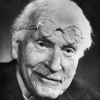Carl Jung

Carl Jung
Carl Gustav Jungwas a Swiss psychiatrist and psychotherapist who founded analytical psychology. His work has been influential not only in psychiatry but also in philosophy, anthropology, archaeology, literature, and religious studies. He was a prolific writer, though many of his works were not published until after his death...
NationalitySwiss
ProfessionScientist
Date of Birth26 July 1875
CityKesswil, Switzerland
CountrySwitzerland
Complexes are psychic contents which are outside the control of the conscious mind. They have been split off from consciousness and lead a separate existence in the unconscious, being at all times ready to hinder or to reinforce the conscious intentions.
I have always been impressed by the fact that there are a surprising number of individuals who never use their minds if they can avoid it, and an equal number who do use their minds, but in an amazingly stupid way.
The conscious mind allows itself to be trained like a parrot, but the unconscious does not—which is why St. Augustine thanked God for not making him responsible for his dreams.
Whoever is afraid must needs be dependent; a weak thing needs support. That is why the primitive mind, from deep psychological necessity, begot religious instruction and embodied it in a magician or a priest.
Mind and matter are two different aspects of one and the same thing.
The distinction between mind and body is an artificial dichotomy, a discrimination which is unquestionably based far more on the peculiarity of intellectual understanding than on the nature of things.
Thanks to the acuteness of his mind, he saw through the poverty of philosophical and Gnostic knowledge, and contemptuously rejected it.
The unconscious mind of man sees correctly even when conscious reason is blind and impotent.
People learn from who we are, rather than what we say, and to believe otherwise is a disease of the mind.
The mind has grown to its present state of consciousness as an acorn grows into an oak, or as saurians developed into mammals.
The growth of the mind is the widening of the range of consciousness, and...each step forward has been a most painful and laborious achievement.
The unconscious process moves spiral-wise around a center, gradually getting closer, while the characteristics of the center grow more and more distinct.
Therein lies the social significance of art: It is constantly at work educating the spirit of the age, conjuring up the forms in which the age is more lacking. The unsatisfied yearning of the artist reaches back to the primordial image in the unconscious, which is best fitted to compensate the inadequacy and one-sidedness of the present. The artist seizes on this image and, in raising it from deepest unconsciousness, he brings it into relation with conscious values, thereby transforming it until it can be accepted by the minds of his contemporaries according to their powers.
It is my mind, with its store of images, that gives the world color and sound . . . Everything is mediated through the mind.